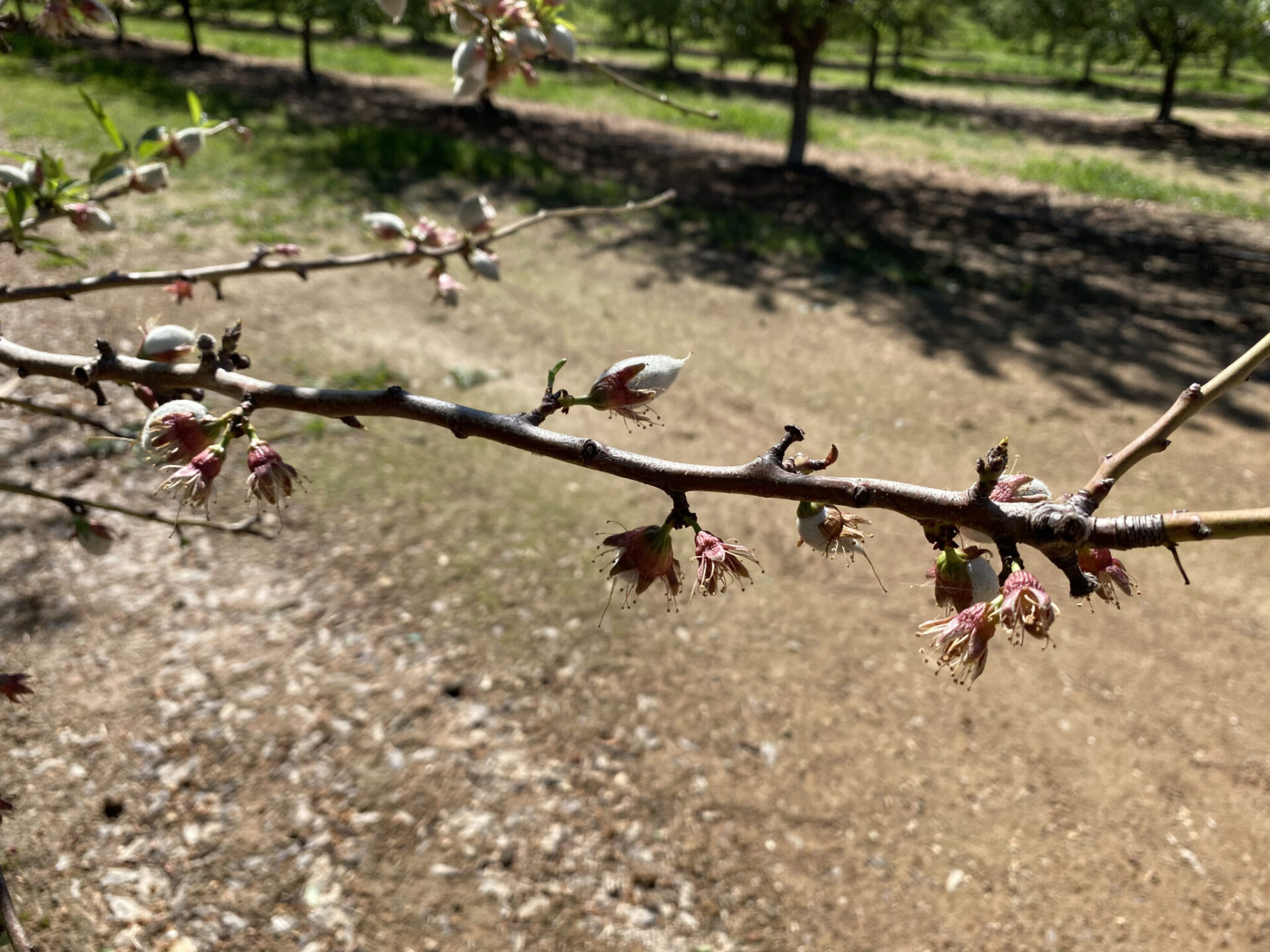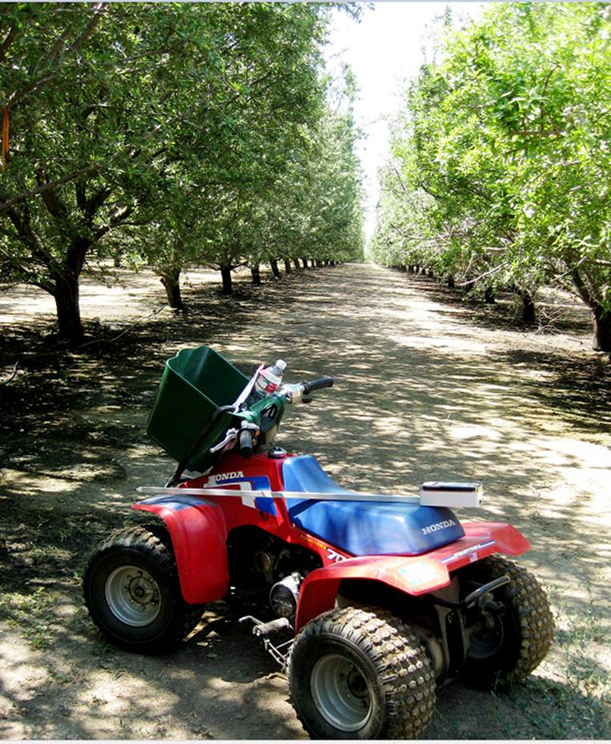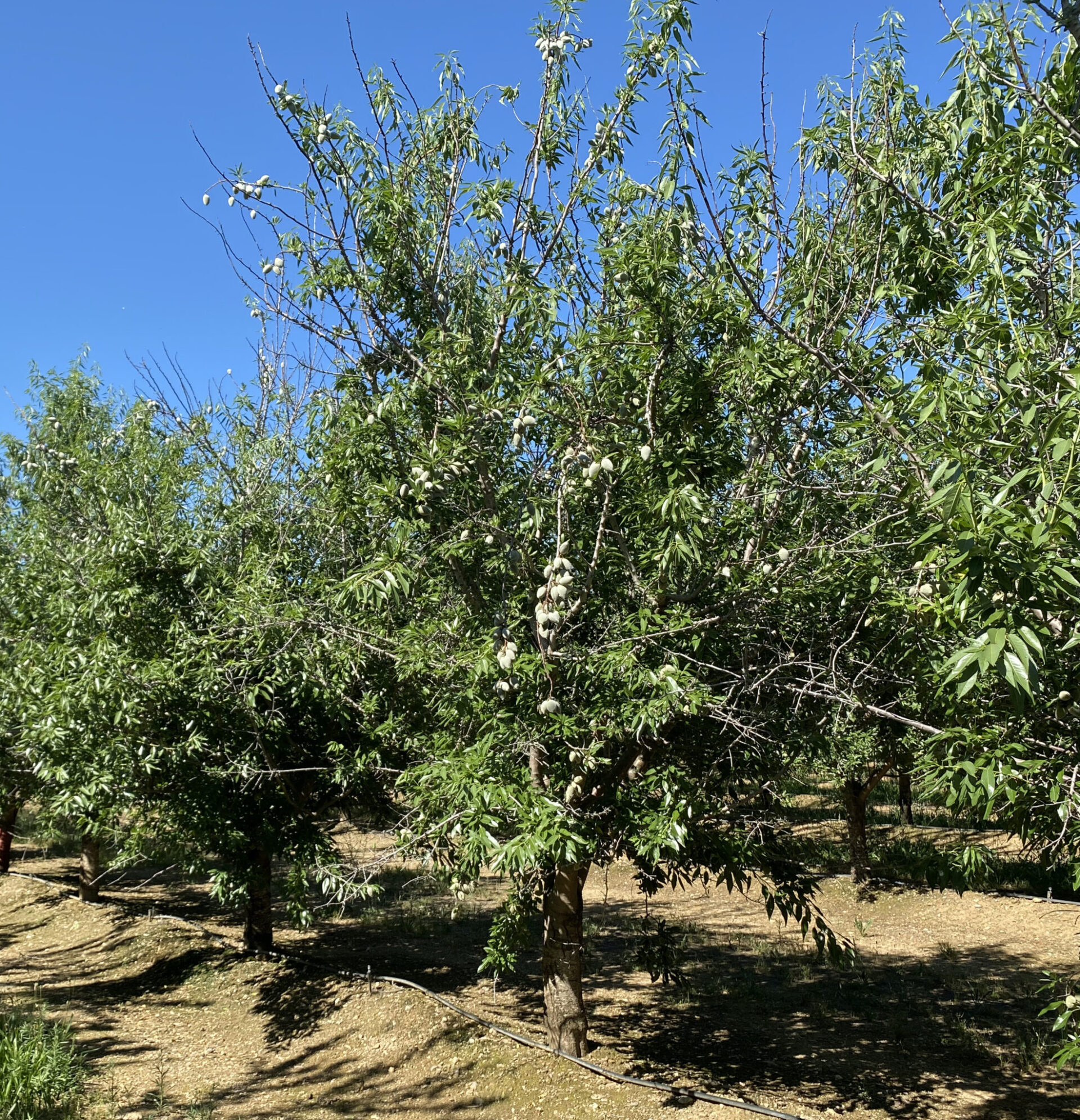
Although delayed leafing in almonds has been reported sporadically for more than two decades, in 2020 it captured the attention of researchers who say they want to make an effort to better understand the malady.
Marked by vegetative buds that do not push or are slow to push, the problem has raised several yet unproven theories about the cause.
“I can’t tell you what’s causing it, but I can tell you what isn’t causing it in many instances,” said Luke Milliron, UCCE orchard systems advisor for Butte, Glenn and Tehama counties.
He said he also believed the problem, dubbed leafing failure, is likely due to multiple factors and not just a single one.
Milliron recommended growers have patience and avoid hastily pruning or removing affected trees since they frequently recover later in the season. Instead, they should mark the affected trees so they can follow them throughout the season and subsequent years.
“I think growers do err on the side of action because they see a problem and they want to address it,” he said. “But I think that might lead to more problems than solutions. In a couple of cases, the problems have gotten worse. Historically, it can be an issue that really isn’t an issue going forward. I really stress to be cautious and not err on the side of pulling trees out.”
In a couple cases, Monterey trees with severe symptoms in 2018 did not recover in 2019, with the problem becoming more severe in 2020. But in several others, Milliron said, trees that had the problem early in spring 2020 were undistinguishable from non-affected ones later in the season by all but the growers themselves.
He also recommended minimizing any stressors – such as bark damage from shakers, insect pests or diseases, or under- or over-irrigation – that the trees may be experiencing. At the same time, he said growers should avoid throwing excessive nutrient treatments or irrigation at the trees to help them recover and advised growers to take a wait-and-see approach.
What is Delayed Leafing?
Delayed leafing symptoms have been periodically noted before 2000. More recently, farm advisors reported the issue in 2000, 2006, 2010, 2017, 2018 and 2020. In each of these years, farm advisors and specialists tried to link the problem back to clues in that year’s weather and stressors in the orchard’s history.
It is not non-infectious bud failure, or crazy top, which is a genetic disorder found in many varieties with Nonpareil in its parentage, most notably Carmel, Milliron said.
Delayed leafing has been seen predominately in the Monterey variety, ranging from a few trees on an orchard’s edge to a couple Northern California orchards that had over half of Monterey pollinizers affected. And not every orchard with Monterey has had the problem, either. Rather, it has been scattered, Milliron said.
Delayed leafing also has been reported in the Bennett-Hickman variety, although he said he isn’t convinced the two issues are related. Bennett is a relatively new variety just starting to see commercial plantings, so it doesn’t have the history of many of the older varieties. In addition, Milliron has seen a couple minor cases of the malady in the Butte and Padre varieties.
In minor cases, growers have seen leaf-out delays on just a few branches. In severe cases, there are no viable vegetative buds, only nuts on several branches.
Typically, if you cut into the bark of affected branches or shoots, the vascular tissue is green and alive. As the season progresses, some growers have seen spotty tip dieback.

Theories Abound
The cause or causes remains elusive, although several researchers have their own theories.
Roger Duncan, UCCE farm advisor in Stanislaus County, said he has seen similar symptoms in Monterey in scattered orchards over the years. But during 2020, the malady appeared more widely and was particularly noticeable in many second-leaf orchards with Monterey or Bennett-Hickman.
“The symptoms of uneven budbreak somewhat mimic the effects of low chill,” he said. “Young trees just may not go dormant as early as older trees in the fall, especially if people are still trying to push them. This may delay the onset of chill accumulation.”
Like others, Duncan said he isn’t certain about the cause or causes, but he agrees that lack of chill hours or chill periods may contribute. “Even though the models showed we had sufficient chilling, maybe we still have things to learn about how best to measure chill.”
In addition to almonds, growers of walnuts and pistachios also reported issues with delayed leafing during the 2020 spring. “What it means, we don’t know,” he said. “Even just looking at some of the red-leaf maple trees around town that often require higher chill hours, I saw there were a lot of trees that had uneven bud break that looked similar to what we saw in some almond orchards.”
A dry winter with little precipitation also may be a factor, Duncan said. In 2019-2020, for example, the state didn’t receive appreciable precipitation until March 2020, with no rain falling in the month of February. And heading into the 2020-21 winter, the state had received only scant rain as of early December.
Katherine Jarvis-Shean, a UCCE orchard systems advisor for Yolo, Solano and Sacramento counties, said she saw a few orchards in her area with the issue in 2020, but it wasn’t widespread.
“It wasn’t like my phone was blowing up with requests or questions from people,” she said. “Until this year, it wasn’t something that was hugely on my radar.”
One orchard that came to mind had trees that didn’t bounce back after delayed leafing and appeared to struggle throughout the season. In a couple other orchards, growers pointed out a few scattered trees that had less growth on them than the others.
What Jarvis-Shean has all but ruled out is a genetic disorder like crazy top. “It’s certainly not the same thing that Carmel experiences,” she said. “The fact that it’s not every year and the fact that it’s not in every orchard indicates there’s some overlaying climate, weather and some type of management element. We’re still trying to figure out which stressors relate to how much of this is occurring. We’re still trying to get our arms around it, and I know it’s frustrating for growers.”
UC Davis almond breeder Tom Gradziel said he also believes it may be a combination of warm winters and a history of severe tree stress. Those could include severe water stress during the previous harvest, wet conditions the previous season, acute anthracnose history, defoliation from mites and trunk bark cankers.
The Role of Carb Loading
UC Davis Plant Sciences Professor Maciej Zwieniecki has found the Monterey variety seems to store lower amounts of non-structural carbohydrates at the beginning of winter than some other varieties.
Warm fall and winter conditions can increase tree respiration, resulting in exhausted carbohydrate reserves as the tree enters reproduction in late winter. Delayed leafing has occurred after a warm winter in some, but not all, years. Zwieniecki also plans to look at whether low precipitation amounts could be a contributing factor.
To help shed more light on the role of carbohydrates in nut trees, he founded the Carbohydrates Observatory, which enlists citizen scientists. In this case, he asks growers of almonds, pistachios and walnuts to send monthly samples of wood and bark for analysis of starches and sugars. (For more information on the observatory, visit bit.ly/35WCqxm)
“We need more growers to send their samples,” Milliron said. “Monterey, Bennett, Independence – on all of these varieties, we don’t have a lot of data.”
Growers who submit samples can track their tree carbohydrate levels throughout the year and tie them to climate, management or phenological events. Ultimately, Zwieniecki hopes the information can be used to improve spring and fall management as well as improve the industry’s understanding of chill periods. He also is working on a large database of information, which can be used to develop an easy-to-use tool to predict yield the following season.
In irrigation trials conducted in the late 1990s and 2000s, UCCE Almond and Walnut Specialist Bruce Lampinen was able to create similar delayed leafing symptoms in Monterey with over-irrigation.
With delayed leafing in 2018 and 2020, Lampinen pointed to wet conditions the previous spring as a possible contributor. Both he and Milliron continue to promote the use of pressure bombs to time the season’s first irrigation and avoid over-irrigation in early spring. Monterey trees, in particular, don’t like wet feet in the spring. Saturated spring soil conditions also can lead to root death and water stress during the summer.
















